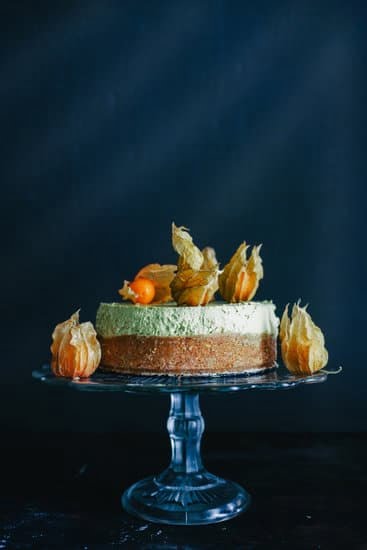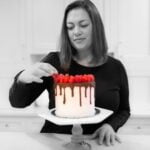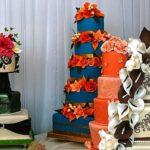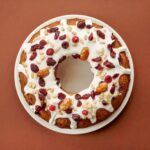Are you ready to learn how to make cake fondant decorations? Fondant is a versatile and popular medium for decorating cakes, with its smooth and flawless finish. In this article, we will explore the different types of fondant, essential tools and ingredients needed to create beautiful decorations, step-by-step guides, advanced techniques, tips for adding color, and preserving your creations.
Fondant is a type of icing that can be rolled out into a smooth sheet and draped over cakes for a flawless finish. It is often used to create intricate cake decorations such as flowers, figures, and other designs. Using fondant allows decorators to achieve a professional look that is hard to replicate with other types of icing.
In the following sections, we will discuss the different types of fondant – rolled fondant vs. poured fondant, the essential tools and ingredients needed for making fondant decorations, as well as a step-by-step guide on how to roll, cut and shape the perfect fondant decorations for your cakes.
Whether you’re a beginner or an experienced cake decorator looking to elevate your skills, this article will provide you with all the information you need to create stunning cake decorations using fondant.
Types of Fondant
When it comes to creating stunning cake decorations, fondant is a versatile and popular choice among bakers and cake decorators. Fondant is a type of icing that can be rolled out into thin sheets to cover cakes or shaped into various designs for elaborate decorations. There are two main types of fondant commonly used in cake decorating: rolled fondant and poured fondant.
Rolled fondant, also known as ready-to-roll or pettinice, is the most common type of fondant used for cake decorating. It has a dough-like consistency that can be rolled out with a rolling pin and draped over cakes for a smooth, elegant finish. Rolled fondant can also be molded and shaped into intricate designs such as flowers, ribbons, and figures, making it a favorite choice for creating elaborate cake decorations.
On the other hand, poured fondant has a more liquid consistency and is often used for coating petit fours, truffles, and other confections. This type of fondant is made by cooking sugar syrup to a specific temperature and then beating it to create a smooth, creamy texture. Poured fondant can be flavored and colored to add variety to your decorations.
Both rolled and poured fondants have their own unique uses in cake decorating, so it’s important to choose the right type based on your specific design needs. Understanding the differences between these two types of fondants will allow you to achieve the desired look for your cake decorations.
In the following sections, we will explore how to make cake fondant decorations using both rolled and poured fondants, as well as the essential tools and techniques needed for successful cake decorating with fondant.
Essential Tools and Ingredients for Making Fondant Decorations
Fondant decorations are a beautiful and versatile way to add flair to any cake. To create these stunning edible embellishments, you will need a few essential tools and ingredients. Here’s a guide on what you’ll need to get started.
First and foremost, you will need fondant, which serves as the base for all your decorations. You can purchase pre-made fondant in stores or make your own at home using ingredients like confectioners’ sugar, water, gelatin, and glucose syrup. Additionally, you’ll require a rolling pin to flatten the fondant to your desired thickness and shape.
Another essential tool is a set of fondant cutters in various shapes and sizes. These cutters will help you achieve clean and precise edges when cutting out different elements for your decorations. Furthermore, it’s important to have a non-stick silicone mat or surface for rolling out the fondant to prevent it from sticking.
In addition to the above, having cornstarch or powdered sugar on hand is crucial for dusting your work surface and preventing the fondant from sticking to the rolling pin or cutters. This simple step can make a world of difference in the ease of working with fondant. Lastly, keep some food coloring gels nearby if you plan on adding color to your fondant decorations.
| Essential Tools | Ingredients |
|---|---|
| Rolling Pin | Confectioners’ Sugar |
| Fondant Cutters | Water |
| Silicone Mat | Gelatin |
Learning how to make cake fondant decorations can be an exciting culinary journey that allows for endless creativity and artistry. With these essential tools and ingredients at your disposal, you’ll be well-equipped to bring your cake decorating visions to life with beautifully crafted fondant adornments.
Step-by-Step Guide to Making Fondant Decorations
Fondant decorations are a beautiful and versatile way to adorn cakes for any occasion. Whether you’re creating simple flowers or intricate designs, knowing how to make cake fondant decorations can elevate your sweet treats to a whole new level. In this section, we’ll provide a step-by-step guide to making fondant decorations, covering everything from rolling and cutting to shaping.
Rolling Out the Fondant
The first step in making fondant decorations is rolling out the fondant to the desired thickness. To do this, dust your work surface with powdered sugar or cornstarch to prevent sticking, then use a rolling pin to roll out the fondant into an even layer.
If you’re using pre-made rolled fondant, it should already be at the right consistency for rolling. If you’re working with poured fondant, you’ll need to pour it into molds or shape it by hand once it reaches the right temperature and consistency.
Cutting and Shaping
Once your fondant is rolled out, it’s time to cut and shape it into your desired decorations. Use cookie cutters or specialty fondant cutters to create shapes like flowers, leaves, hearts, or stars. For more intricate designs, consider using a sharp knife or small modeling tools to carefully cut and shape the fondant by hand. You can also use molds and impression mats to add texture and detail to your decorations.
Finishing Touches
After cutting and shaping your fondant decorations, you may want to add extra details such as veining on flower petals or embossing on leaves. This can be done using special veining tools, toothpicks, or even just your fingertips. Once your decorations are complete, allow them to dry and set at room temperature before placing them on your cake.
Learning how to make cake fondant decorations takes practice and patience but with these step-by-step techniques for rolling, cutting, and shaping fondant, you’ll be on your way to creating beautiful edible works of art in no time.
Adding Color to Fondant
Choosing the Right Coloring
When it comes to adding color to fondant, it’s important to use the right type of coloring. Gel or paste food colors are recommended as they won’t change the consistency of the fondant.
Avoid using liquid food coloring as it can make the fondant too sticky and difficult to work with. It’s also advisable to use a toothpick or small spatula when adding the color in small amounts, gradually mixing it into the fondant until you achieve the desired shade.
Blending Colors
If you’re looking to create custom shades or blend multiple colors, start by kneading your base color into your fondant. Once that is fully incorporated, add your secondary color in small increments, blending them thoroughly each time. Take note that some colors can intensify over time, so it’s best to let the colored fondant sit for a while before making any adjustments.
Avoiding Staining and Discoloration
To prevent staining your hands and work surface when kneading colored fondant, consider wearing food-safe gloves and working on a silicone mat or parchment paper. Additionally, store excess colored fondant in an airtight container away from direct sunlight or heat to avoid discoloration. If possible, use colored fondant decorations as soon as possible for best results.
By following these tips and techniques for adding color to fondant, you’ll be able to create vibrant and visually appealing cake decorations that will surely dazzle your friends and family.
Advanced Techniques
When it comes to cake decorating, fondant offers endless possibilities for creating intricate and beautiful designs. One of the advanced techniques for working with fondant is embossing, texturing, and modeling. These techniques allow you to add depth and detail to your fondant decorations, taking your cake designs to the next level.
Embossing involves using tools or molds to create raised patterns or designs on the surface of the fondant. This technique can be used to add elegant swirls, floral patterns, or other decorative elements to your fondant decorations. Texturing, on the other hand, involves adding different textures such as wood grain, fabric-like patterns, or even stone effects to your fondant. This adds visual interest and dimension to your decorations.
Modeling with fondant allows you to create 3D shapes and figurines that can be used as standalone decorations or as part of a larger design on your cake. With modeling, you can create flowers, animals, characters, and more using fondant. The key is to have the right tools such as sculpting tools and shaping molds to help bring your creations to life.
Learning how to make cake fondant decorations with embossing, texturing, and modeling can take some practice, but with patience and creativity, you can achieve stunning results that will impress any cake lover.
These advanced techniques are a great way to elevate your cake decorating skills and create show-stopping designs that are sure to wow your friends and family. By mastering embossing, texturing, and modeling with fondant, you’ll have the ability to bring any design idea to life on top of a delicious cake.
Storing and Preserving Fondant Decorations
Fondant decorations can be a beautiful and intricate addition to any cake, but they do require some care to ensure they stay looking their best until it’s time to serve the cake. Here are some tips on how to properly store and preserve your fondant decorations:
- Store in an airtight container: Once your fondant decorations are completely dried and hardened, place them in an airtight container. This will help protect them from any dust or moisture in the air.
- Keep away from heat and light: Fondant can be sensitive to heat and light, so it’s important to store your decorations in a cool, dark place. Direct sunlight could cause the colors to fade, so finding a cool, dark cupboard or pantry is ideal.
- Use silica gel packs: If you’re concerned about moisture getting to your fondant decorations, you can add silica gel packs to the container. These will help absorb any excess moisture and keep your decorations dry.
By following these storage tips, you can ensure that your fondant decorations stay in top condition until it’s time to adorn your cake with them. Additionally, preserving them properly will allow you to make them well in advance of when you actually need them.
Tips for Preserving Fondant Decorations
- Avoid touching the surfaces of the decorations too much as oils from your skin can transfer onto the fondant and affect its appearance over time.
- If you’ve used any edible glue or water for adhesion while making the decorations, allow sufficient drying time before storing them away.
- If there are any delicate or protruding parts on the fondant decorations, consider using bubble wrap or tissue paper when storing them to prevent breakage.
Tips for Decorating Cakes With Fondant
Decorating cakes with fondant can take your baked creations to the next level, but it’s important to know the best practices for placement, adhesion, and finishing touches to ensure a beautiful final result. Here are some tips for decorating cakes with fondant:
1. Placement: When placing fondant decorations on a cake, it’s crucial to handle them gently to avoid any tearing or stretching. Make sure the surface of the cake is clean and smooth before applying the fondant decorations. You can use a small amount of water or edible glue to adhere the decorations to the cake.
2. Adhesion: To ensure that your fondant decorations stick securely to the cake, lightly brush the back of each decoration with a small amount of water or edible glue before applying it to the cake. If you’re adding smaller details onto larger fondant pieces, such as flowers or figurines, use a toothpick or small brush to apply a bit of water or edible glue for better adhesion.
3. Finishing touches: Once you’ve placed your fondant decorations on the cake, take some time to add any final touches that will enhance the overall look. This could include adding shimmer dust for a touch of sparkle, using food coloring pens for fine details, or incorporating other edible decorations like sugar pearls or sprinkles.
By following these tips for placement, adhesion, and finishing touches when decorating cakes with fondant, you can create stunning and professional-looking baked goods that are sure to impress anyone who sees them.
Conclusion
In conclusion, mastering the art of making and using fondant decorations can truly elevate the look of your cakes to professional levels. With the right tools, ingredients, and techniques, you can create stunning and intricate designs that will impress your friends and family.
Now that you have learned about the different types of fondant, essential tools and ingredients, step-by-step guide to making fondant decorations, adding color to fondant, advanced techniques like embossing and texturing, as well as storing and preserving your creations, you are ready to showcase your beautiful fondant decorations on your cakes.
Whether you are decorating a cake for a special occasion or simply want to impress your loved ones with a beautifully decorated dessert, knowing how to make cake fondant decorations will surely take your baking skills to the next level. So go ahead and experiment with different designs, colors, and techniques until you find your own unique style in creating fondant decorations that will make your cakes stand out.

Welcome to our cake decorating blog! My name is Destiny Flores, and I am the proud owner of a cake decorating business named Cake Karma. Our mission is to provide delicious, beautiful cakes for all occasions. We specialize in creating custom cakes that are tailored specifically to each customer’s individual needs and tastes.





